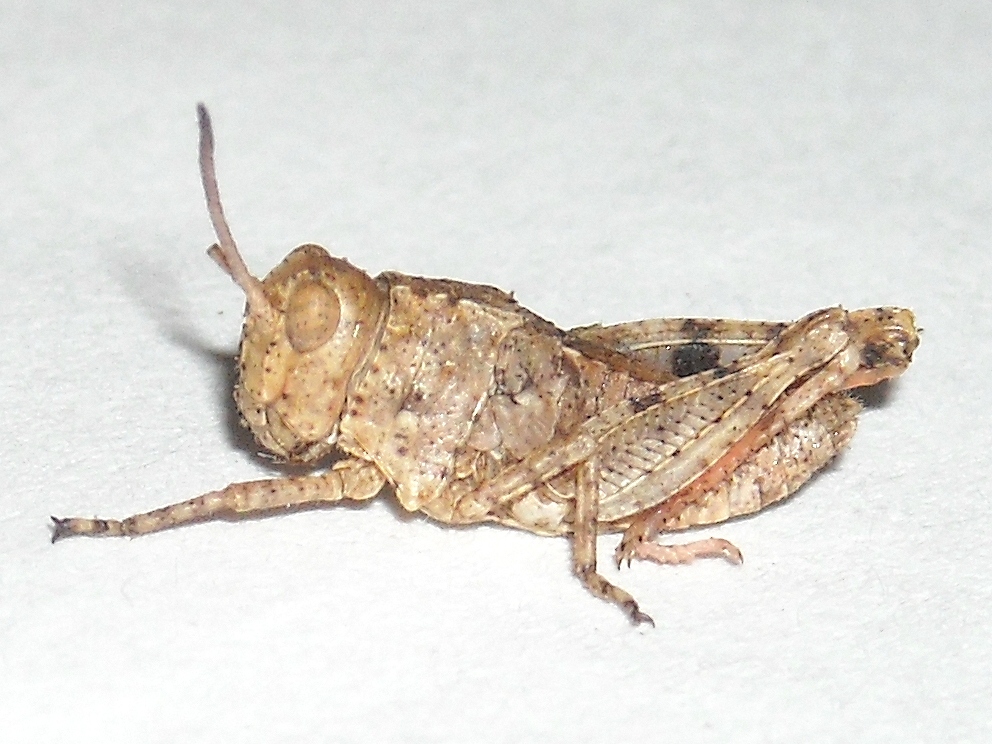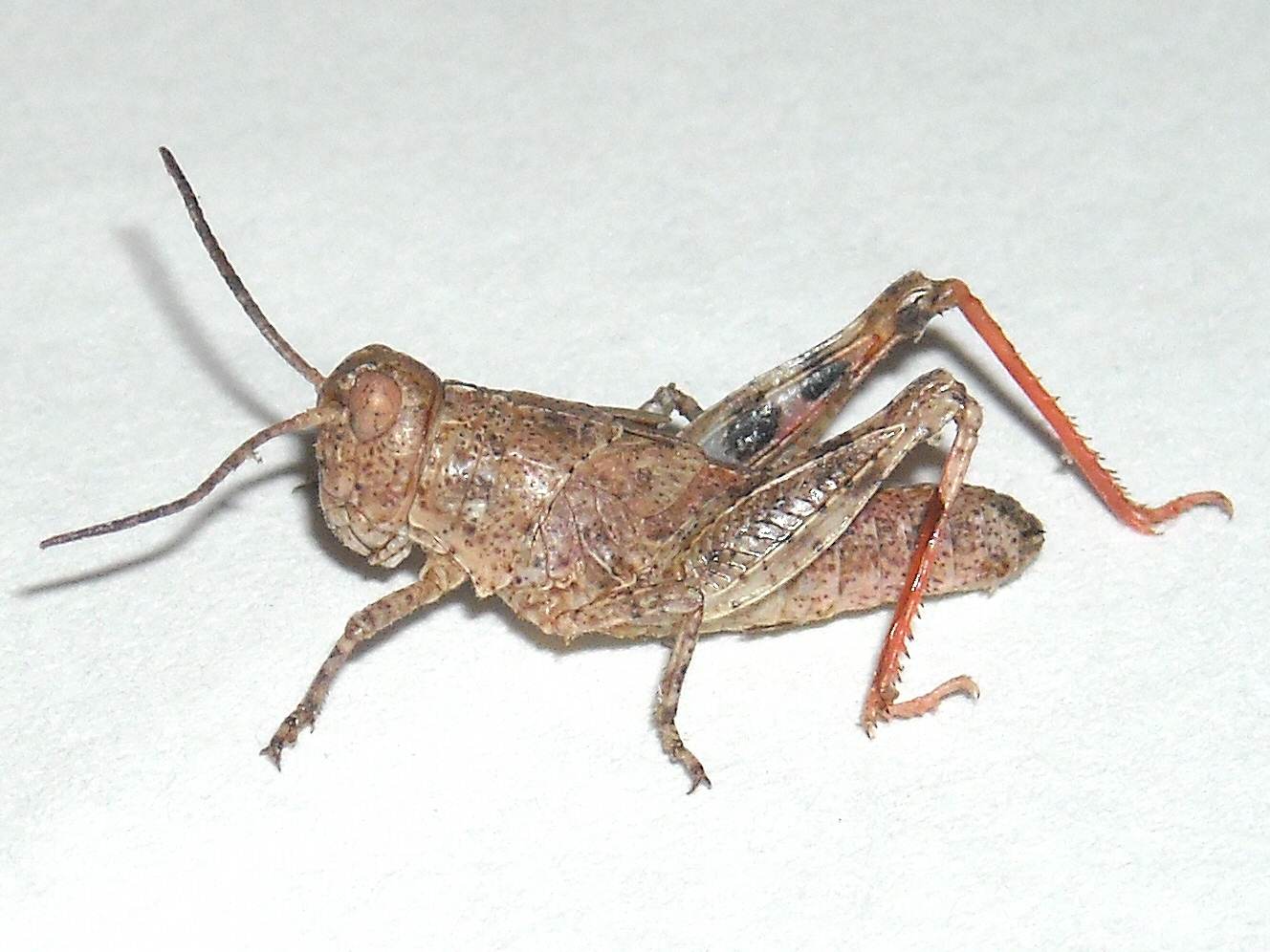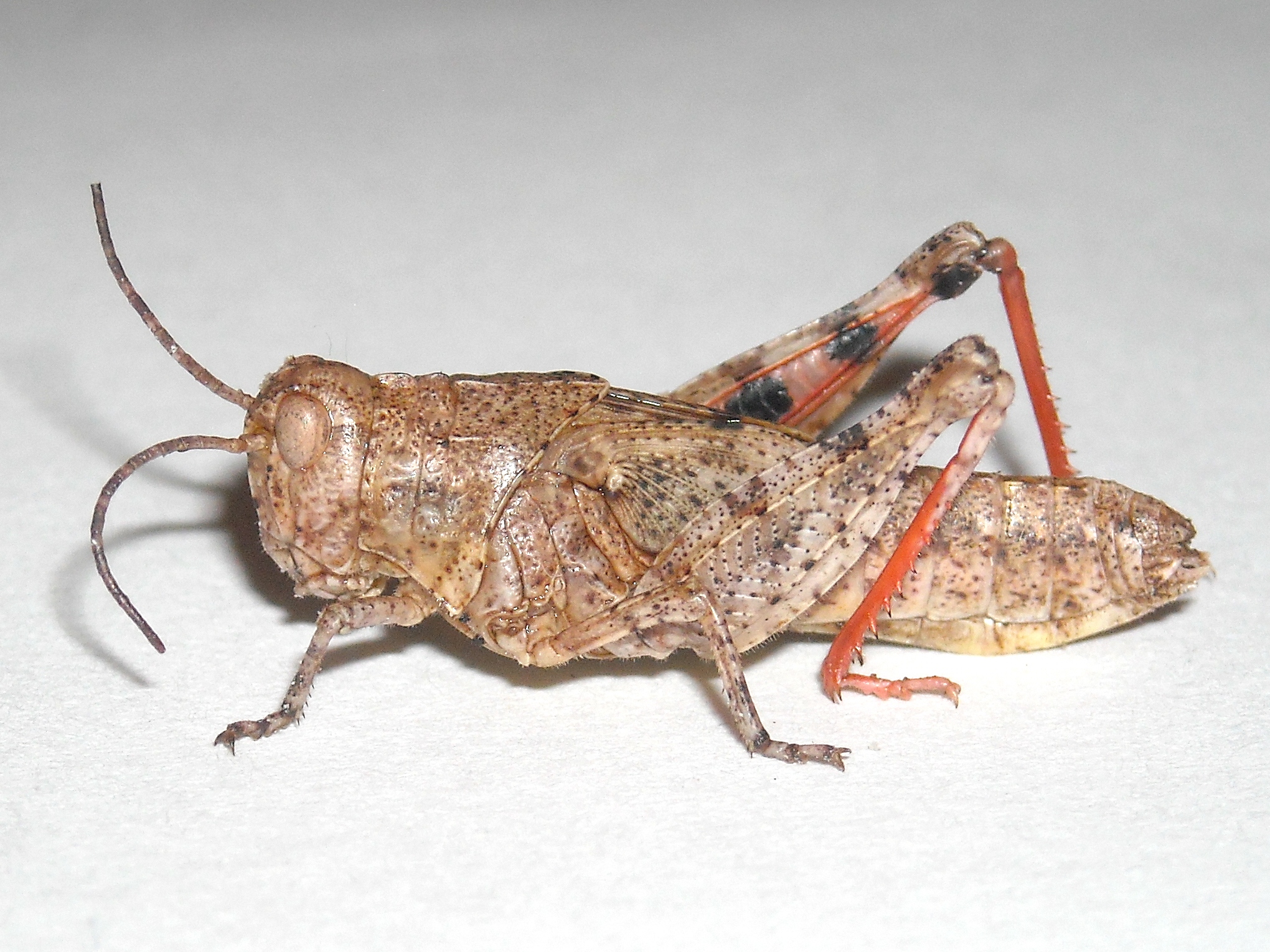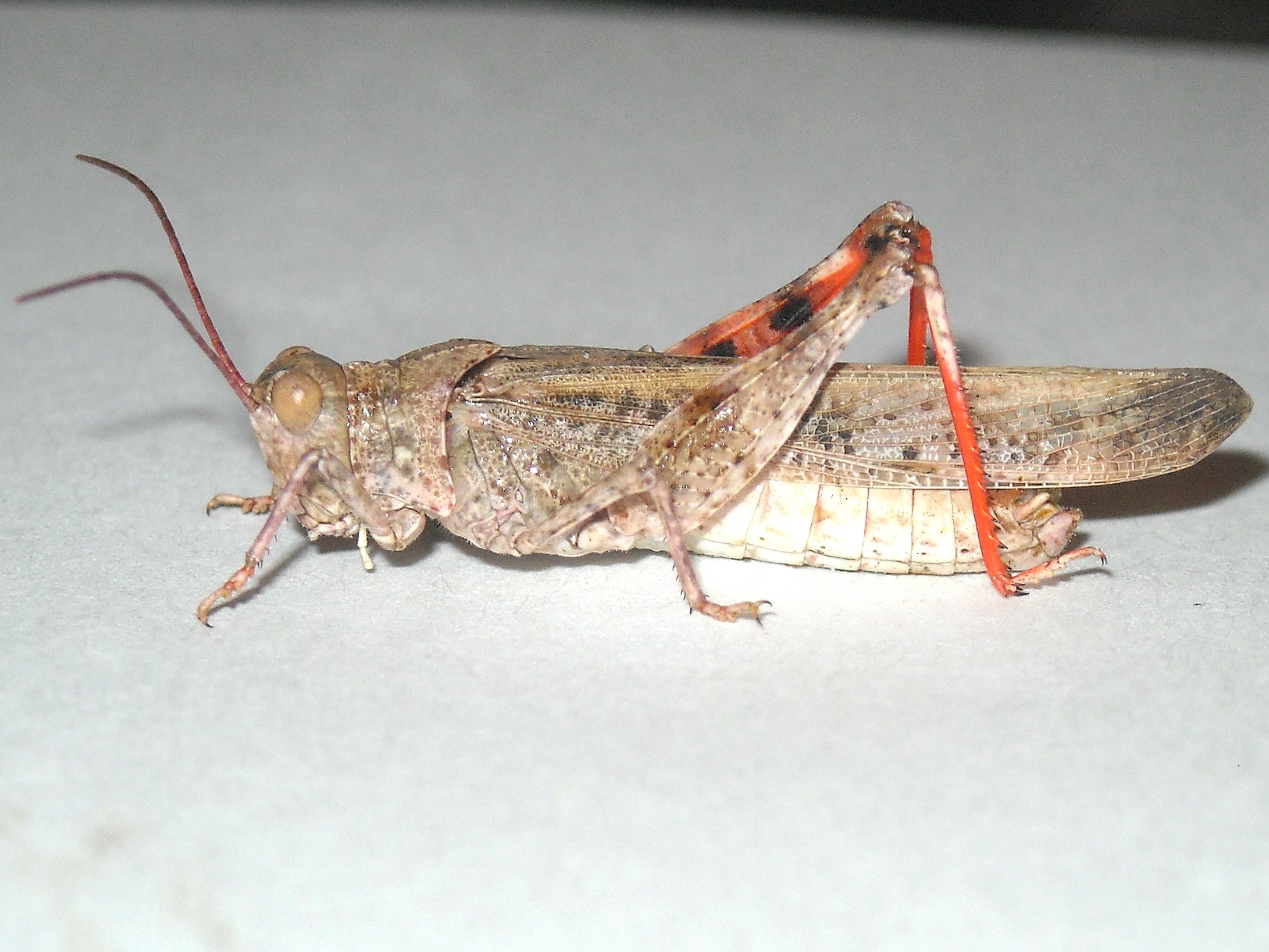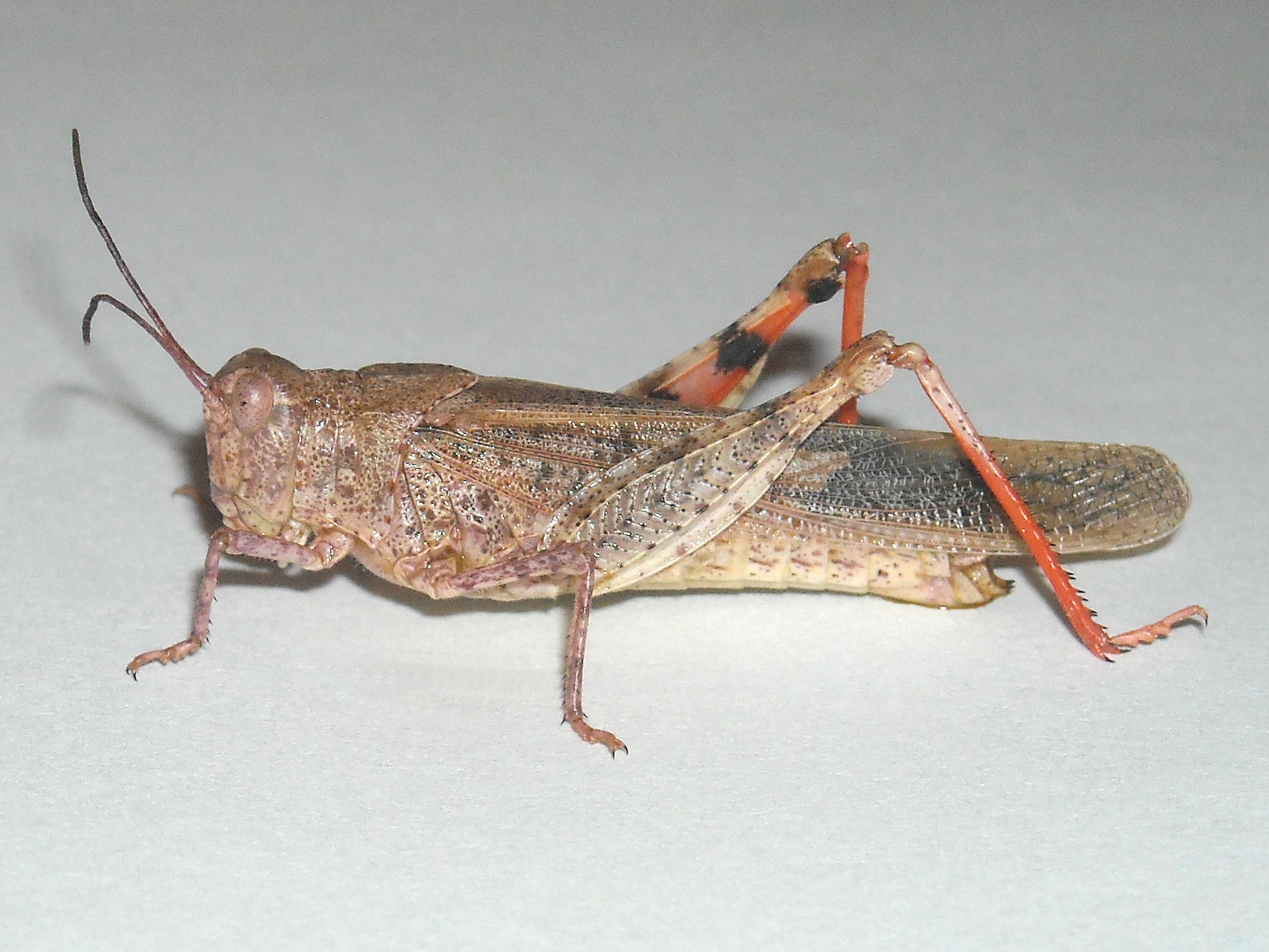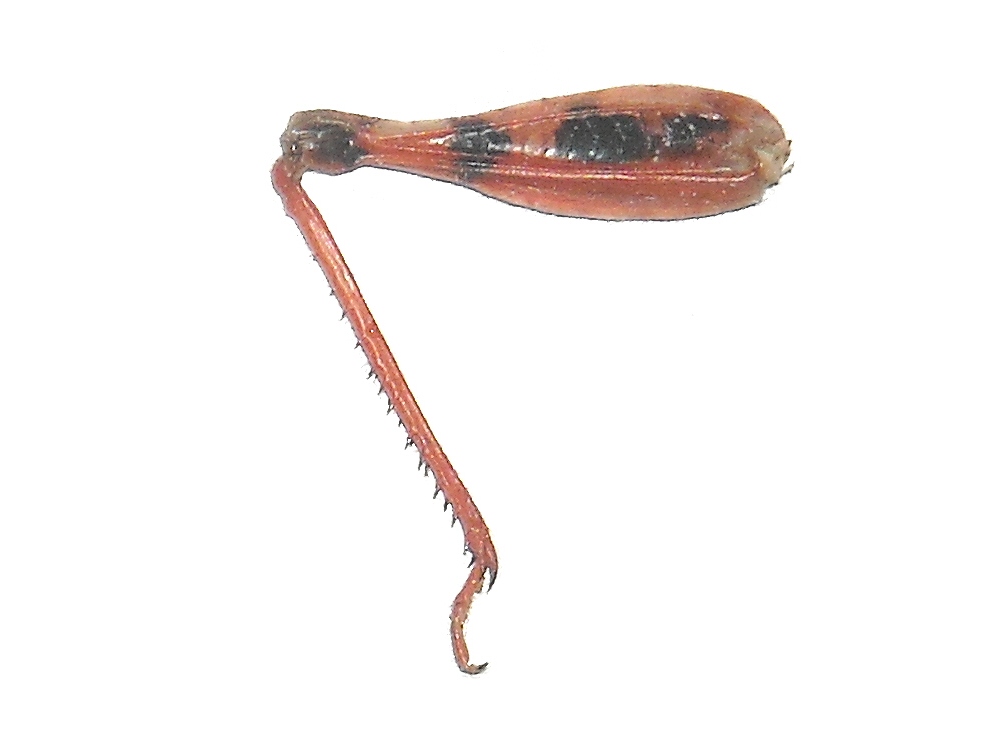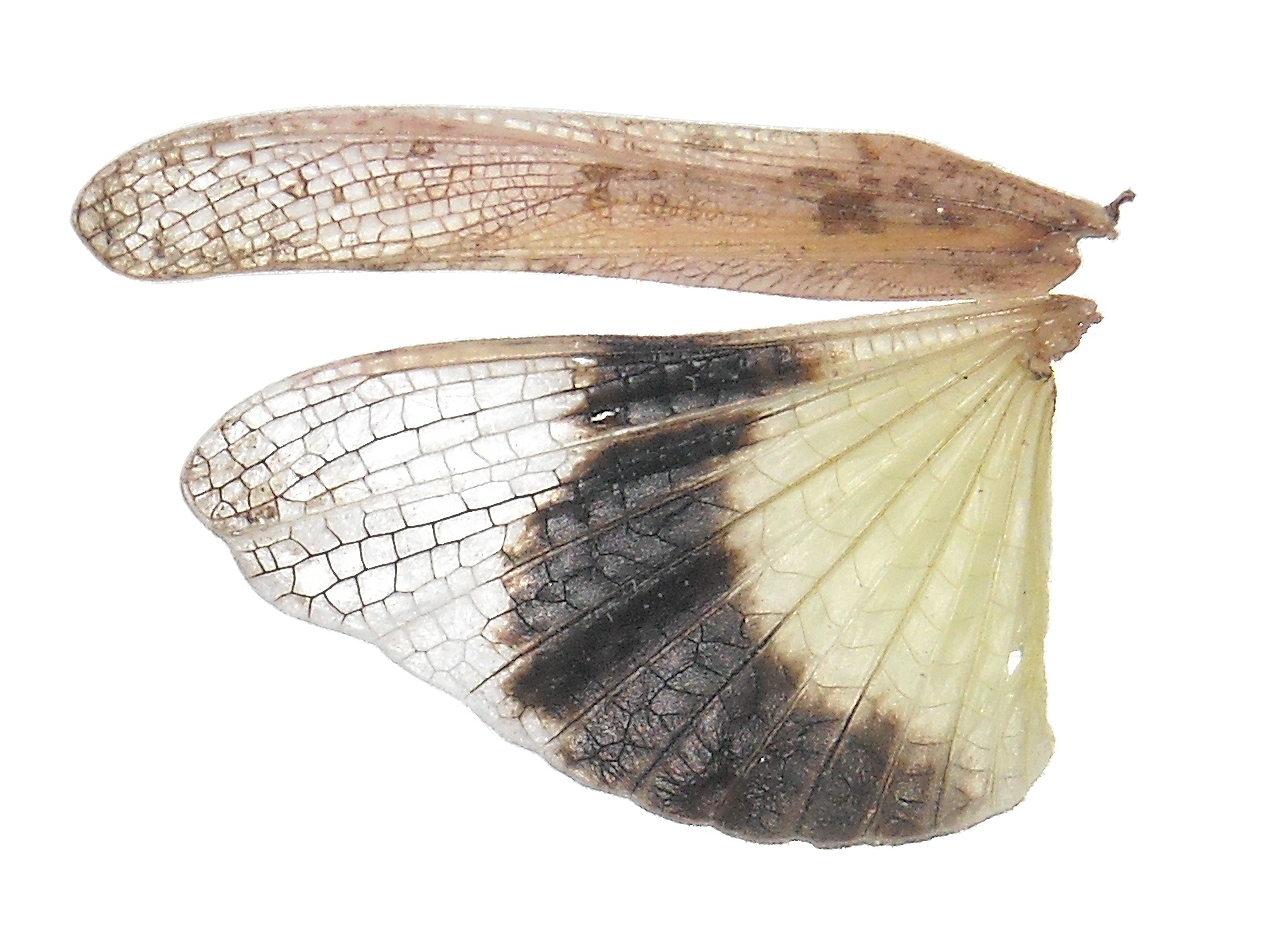Trimerotropis agrestis
|
Geographic range of Trimerotropis agrestis (McNeill) |
|
Fig. 1, third instar |
|
Fig. 2, fourth instar |
|
Fig. 3, fifth instar |
|
Fig. 4, adult male |
|
Fig. 5, adult female |
|
Fig. 6, inner view of leg |
|
Fig. 7, forewing (tegmen) and hindwing |
Species
Toothed field grasshopper
Trimerotropis agrestis (McNeill)
Subfamily Oedipodinae
Identification
T. agrestis ranges in coloration from pale brown to reddish brown and often has dark brown spots, which matches their habitat preference of sandy soils. The inner surface of the hind femur is orange to pinkish-red and marked with two black bands. Hind tibia are usually orange, sometimes reddish. The pronotum is marked by a dark patch on the middle lateral surface. The posterior angle of the pronotum is rounded. The hind wings are yellow in color, usually accompanied by a black band in the center.
T. agrestis in some locations can be differentiated from others Trimerotropis species by possessing tegmina which are not banded. The habitat preference of T. agrestis (sand dunes and sandy soils) is also useful in identification.
Distribution and habitat
Trimerotropis agrestis ranges east of the Rocky Mountains to central Kansas and Nebraska, and from the Northern tip of Texas into southern Alberta, Manitoba, and Saskatchewan, Canada. Trimerotropis agresits is found on sand dunes or bare sand with sparse vegetation.
Economic importance
Not economically important.
Food preferences
Diet is not well known. Trimerotropis agrestis is known to feed on Psoralea sp., but a mixture of forbs, grasses, and insect carrion likely comprise their diet breadth.
Dispersal and migration
Not well known, although it has been noted that the flight signaling patterns of T. agrestis do not vary from other oedipodines. They are, however, known to fly silently when disturbed.
Hatching
Little is known, but eggs do overwinter in the soil.
Nymphal development
Nymphs are present in the spring.
Adults and reproduction
Adults present from July through November depending upon location. Reproduction is poorly documented, but T. agrestis does occasionally hybridize with Trimerotropis maritima where their ranges overlap. Females are known to produce a flight display with accompanying crepitation when sexually receptive.
Population ecology
Not well known. T. agrestis is not widely distributed and rarely, if ever, occurs in high numbers. It can be locally common in bare dune areas.
Daily activity
Little is known. Both males and females signal by crepitation, and do so during flights provoked by social interaction.
Selected references
Brust, M. L., W. W. Hoback, and R. J. Wright. 2008. The Grasshoppers (Orthoptera: Acrididae and Romaleidae) of Nebraska. University of Nebraska-Lincoln Extension. 138pp.
Brust, M. L., W. W. Hoback, and R. J. Wright. 2009. Apparent Hybridization Between Trimerotropis agrestis and Trimerotropis maritima (Orthoptera: Acrididae) in a Recently Disturbed Habitat. Journal of the Kansas Entomological Society 82(3): 215-222.
Campbell, J. B., W. H. Arnett, J. D. Lambley, O. K. Jantz and H. Knutson.1974. Grasshoppers (Acrididae) of the Flint Hills native tallgrass prairie in Kansas.Kansas Agricultural Experimental Station Research Paper 19.
Capinera, J.L., and T.S. Sechrist. 1982a. Grasshopper (Acrididae) hostplant associations: Response of grasshopper populations to cattle grazing intensity. Can. Entomol. 114:1055-1062.
Capinera, J.L., and T.S. Sechrist. 1982b. Grasshoppers (Acrididae) of Colorado: Identification, Biology and Management. Colorado St. Univ. Exp. Sta., Fort Collins. No. 584S, 161 pp.
Otte, D. 1981. The North American Grasshoppers. Volume 1. Acrididae: Gomphocerinae and Acridinae. Harvard University Press, Cambridge. 275 pp.
Otte, D. 1984. The North American Grasshoppers, Volume II, Acrididae: Oedipodinae. Harvard University Press, Cambridge, MA. 366 pp.
Willey, R. B., and R. L. Willey. 1970. The behavioural ecology of desert grasshoppers I. Presumed sex-role reversal in flight displays of Trimerotropis agrestis. Animal Behaviour 18(3): 473-477.


